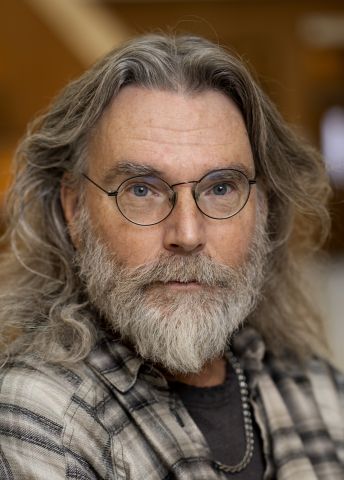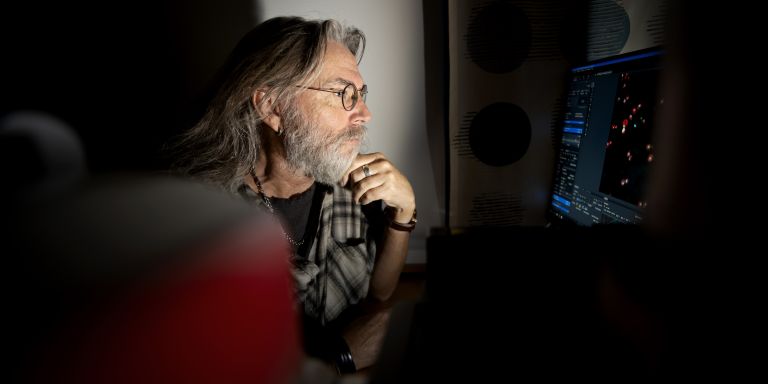
Thomas Nyström
Professor of Microbiology
Wallenberg Scholar
Institution:
University of Gothenburg
Research field:
Model systems for genetic interactions between mitochondrial and chromosomal DNA


Wallenberg Scholar
Institution:
University of Gothenburg
Research field:
Model systems for genetic interactions between mitochondrial and chromosomal DNA
We cannot completely stop ageing, and no one will ever live forever. But understanding the causes and processes of ageing is a crucial challenge for research, since this knowledge can lead to better diagnostics and therapies for age-related diseases.
During his career, Nyström, professor of microbiology at the University of Gothenburg, has made several important discoveries about the processes that our cells undergo as we age. In particular, he has studied cellular “quality control,” i.e., how cells detect and remove damaged proteins and how this ability declines with age.
The research team is using yeast cells as a model system.
“In many ways, yeast cells are very similar to human cells and work well as a single-cell model,” he says.
Nyström is concentrating on identifying the genes in cells that are particularly important during ageing and examining how they interact and communicate. He stresses that ageing is a holistic process, in which different parts act and respond to each other’s activities and defects. Understanding where it all begins is key to mapping the sequence of events.
“We want to answer the fundamental question about ageing that applies to all organisms: what goes wrong first? How does the process begin that causes cells and their parts to fail one by one, like dominos?” he says.
In this project, the research team is primarily concerned with communication between two parts of the cell: the nucleus and mitochondria, which are vital for energy conversion and communication. The nucleus and mitochondria both have their own DNA, and the interplay between genes and mutations in these two parts of the DNA is believed to play a key role in ageing.
Yet much remains unknown about these processes. Nyström’s research team will now study them for the first time using the methods and tools they have developed. They hope this will yield useful knowledge about how chromosomal DNA (genes in the cell nucleus) regulates mitochondrial quality control.
“Mitochondria are important to study because they fail early during cellular ageing, accumulating ‘junk’ as cellular quality control deteriorates. We will examine how the DNA of mitochondria and nuclei ‘talk’ to each other and try to identify the genes that influence how quickly or slowly cells age,” he says.
The research team will also map in real time how various cell components break down during ageing. This is made possible by a method they use to capture and follow a single yeast cell’s divisions and phases throughout its lifespan, right up to its collapse – a process that takes a few days in the lab.
“We can see how long before the final cell divisions things start to happen and when protein transport into the mitochondria no longer functions properly. This gives us a vital map of when and how different systems in the cell fail, one after another, during ageing,” he says.
“We want to answer the fundamental question about ageing that applies to all organisms: what goes wrong first?”
The researchers hope to use this knowledge to improve cellular quality control during ageing.
“We may eventually be able to find chemical substances that can modify the communication and signaling pathways between cells. This will enable us to mitigate and delay age-related diseases associated with the accumulation of damaged proteins, such as Alzheimer’s, Parkinson’s and Huntington’s,” he says.
Nyström is often asked about ageing and how far he thinks we can extend our lifespan. He views ageing primarily as an interesting cell biological process and sees clear limits as to how long humans can live.
“The many interconnected processes of ageing are already complex when we study them in single-celled yeast. Humans have an enormous number of cells and tissues that need to communicate with each other, so if something is improved in one part of the body, that might very well divert resources from another. I am skeptical of the notion that humans can live far beyond a hundred, but who really knows? The question is, do we even want to?”
A career in research was not a given for Nyström, who initially chose to train as a chemistry and biology teacher. But after completing that program, he felt he was not ready to enter the world of work.
“I realized I had so many unanswered questions, especially in biology, from my degree course. So I took numerous additional courses, including microbiology, which I found really interesting,” he says.
When he was offered a doctoral position, he felt he had found the right path. His motivation today remains the same as it has always been.
“How do things start? What happens next? It’s always the same driving force: I want answers to questions and to understand how things are interconnected,” he says.
Text Ulrika Ernström
Translation Maxwell Arding
Photo Johan Wingborg